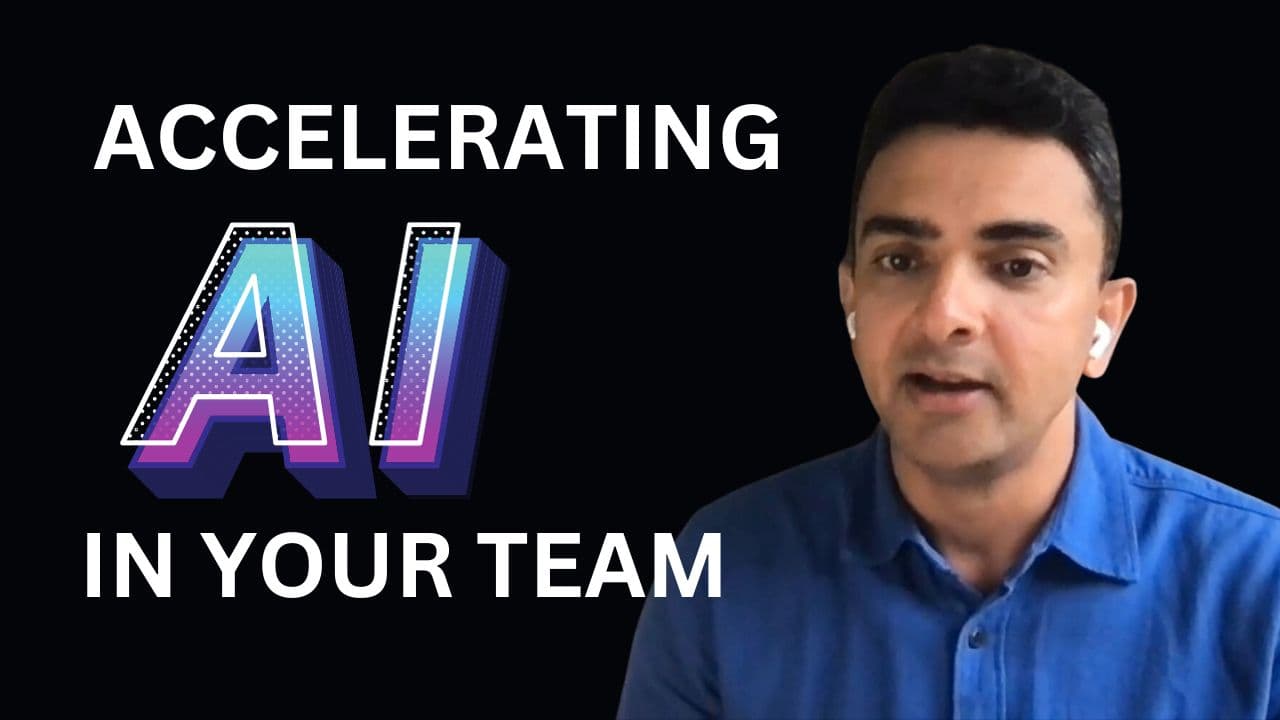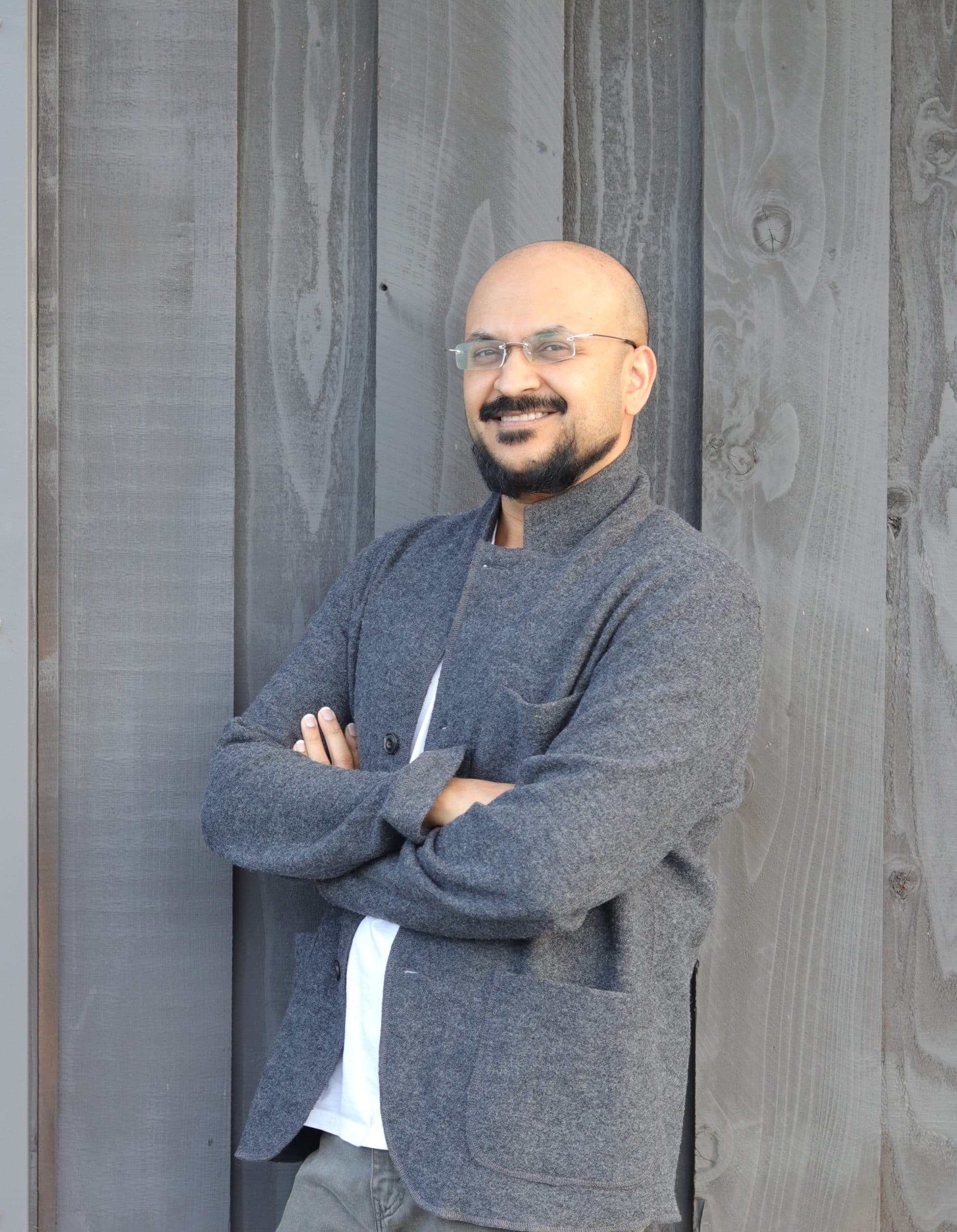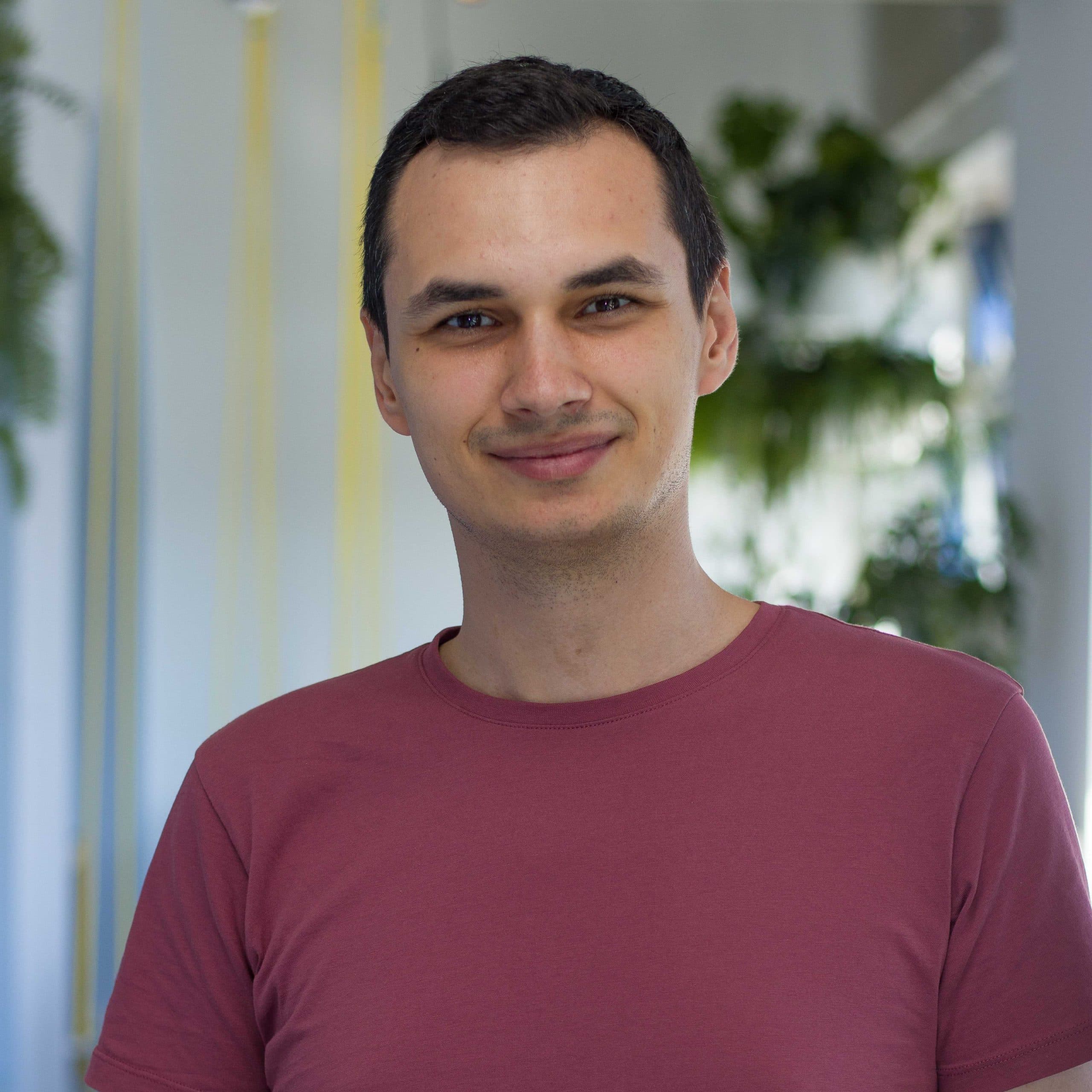Interview with Ravi Bhim, CEO & Founder of BeautifulCode
Published on Oct 1, 2019
13 min read

Vidal: Good afternoon. I have with me today Ravi Bhim. Hi, Ravi, welcome to the show.
RAVI: Thank you, Vidal. Nice to be here.
Tell us about Yourself
Vidal: Ravi, maybe you could tell people a little about your role and what [Beautiful Code](http:// https://www.beautifulcode.co/) does. And by the way, I love the name, cool name.
RAVI: Thank you. Yeah, so I am the founder of Beautiful Code. I set up Beautiful Code in 2013. And the company basically sets up and fully manages remote engineering teams for our clients.
Vidal: Ravi, a lot of companies struggle with remote teams. At some companies I’ve even worked at, they don’t allow it. They have this term, “face-to-face culture,” which basically is a nice way of saying we don’t want any remote teams, we can’t deal with remote teams. So do you have any quick advice for engineering managers on the remote team?
RAVI: Right, great opening question. I think it’s natural that people want to interact in person. Definitely, that has the highest quality quotient in terms of communication and coordination. Remote teams, I believe, is more of an evolution, in general, of how people want to work and how, in general, technology is transforming and making people capable to work remote. So it’s a trend, I believe. Let me take that back, it’s not really a trend any more. It started off as a trend, but it’s going to be inevitable for companies to be remote-smart and even distributed-smart.
There are few companies that have gone a hundred percent distributed. We are not even talking about remote. If people are skeptical of what remote can do for them they probably could learn a different perspective. Not to say this is going to work for everyone. They could learn a different perspective by just observing fully distributed engineering teams.
Coming back to the advice – you don’t have to buy into the remote or the distributed set-ups. But if you spend time to understand, then you can kind of get another perspective of how some of these new-age leaders are basically taking up remote and distributed teams and making it work.
Vidal: Interesting. So you said they can observe to understand… How would be a way if someone’s at a company where they don’t have remote, that they could observe this? I’m just curious what would be your advice on that.
RAVI: Yeah. Some of the companies have been pretty vocal about this. Buffer is a great example. I interviewed Katie Womersley, who is the VP of Engineering at Buffer a few weeks back and I’ve learned a new perspective on distributed team management. Thought leaders such as Katie are actively helping evolve this new style of workforce management.
And there are other companies who are in general gone 100% distributed or 100% remote. Stripe notably has made a big kind of commitment to go remote in recent times.
Talking and preparing ourselves for Remote is fantastic because this is not an area which has been formally researched, unlike for example software development processes. We have the agile methodology, right, which was fairly researched and studied.
There’s not a lot of formal study that went into Remote. But I think that’s just due. It’s a matter of time before people are going to share their best practices on how they run their remote teams.
And then I think communities are going to get built around it. So coming back to your original question, how can people observe? – I think at this stage – talking to people who are already doing it. I’m sure there are a lot of the VP of engineers or CEOs or engineering managers In their network who are doing this. So if you spend some time just talking to them, understanding their perspective, that’s a good way of learning from real experiences. That’s what we do. We get a lot of value from it. I would definitely recommend the same.
What’s your background and how did you get into management?
Vidal: All right, thanks. But I just wanted to deep dive a little bit on that because it’s a topic that I know is a really important topic here. Maybe just going back, I know I looked at your background. I know you work at Yahoo!, you worked at AT&T Interactive, now you have your own company. Maybe you could say a little about your background and how you got into management.
RAVI: I’ve been a software developer, which you mentioned and then it was kind of natural for me I guess at some point for me to pick a management route instead of more an individual contributor route. Management is definitely very interesting and challenging for me as I continue to see it as the primary lever for driving business impact.
So I became an engineering manager during my stint at AT&T Interactive and in general that experience made me very curious. I even went to business school after that, did my MBA. So I think it’s just my natural inclination to learn more about business management as well as engineering management.
What are the biggest challenges you face?
Vidal: All right. You mentioned that you found management also challenging too. I’m curious, what are some of the biggest challenges you face as a manager?
RAVI: I think they’re all really good challenges. The reason why I think a good number of people get into management is because they want to create a large impact.
But boy, where do I begin right? I mean for someone who’s new to management it’s a very different kind of art and science, to begin with. So people take time to really understand most of these things the hard way.
You get into engineering management and then you get some practical experience and then you’re fine. You manage larger teams and you kind of settle there. In general, I feel management is a large area.
But a great manager (in the context of technical companies) understands that there are other aspects other than just engineering management. He plays a role in the people, product and marketing aspects as well. So it’s a lot to chew on and internalizing the dynamics takes time. This is one challenge from an individual standpoint.
Other challenges – I think great managers are pretty good at communication and some people are very fortunate to have great communication skills and they tend to kind of have a relatively easier learning curve. But in general, understanding communication, your own communication, the limitations of your communication and observing how leaders communicate and how effective communicators communicate helps you get better at your game and then that helps you rally support for your teams which is required to deliver impact.
In conclusion, trying to understand general management principles and kind of pushing yourselves to be a better communication are my top challenges I see for managers.
Could you share with us a lesson you learned as an engineering leader?
Vidal: Okay. I totally get that. I mean manager you have to communicate. And is this amazing because everything you do is through communication because it is through other people. And to follow onto this. I read your, you had an interview on your blog with Melissa Leffler,and you asked, “Hey, I’d love to hear a story where you learned a lesson as an engineering manager.” Could you share with us maybe a specific story of some lesson you learned?
RAVI: Sure. I have a few instances which led me to believe in this generalization. For a group of people who are working on a project, its very important that they go beyond their team’s perspective and put themselves in other’s shoes and understand their perspective. A lot of the times this is missing. If people are solely focused on what they are expected to do, then that limits their understanding of the big picture. So this is a learning I try to preach and help my engineering managers to get good at. I asked them, you know, don’t think of yourself as an engineering manager when you’re making decisions think from others’ perspectives as well. Go a little higher and see who are the teams impacted by this initiative and what their perspective is. So I think that’s very, very important. It helps people to become better problem solvers versus becoming “task implementers” – that’s the phrase I keep using with my teams.
There are numerous instances where, for example, if you have a JIRA ticket, the engineer would try to understand the requirement from the detail in the ticket and then implement it without having a real, big-picture understanding.
Vidal: Well, no, I got it. No, that’s totally happened. Where some engineering just heads down and they’re just, like you say, just filling out the JIRA ticket and they’re just doing whatever’s in the ticket but not really understand the context think is what we’re trying to say, Hey, this has happened to you in the past and then it’s if they had just talk with the customer. They might have understood this is actually not what we want.
RAVI: Yeah. In general, most of the teams execute a version of Agile and Agile does a brilliant job on execution. It tries to get everyone on the same page on a short time frame but I wonder what else can we do in a good process-oriented way, so that people are also aligned right on the big picture. When that happens, people are better problem solvers and then they create a higher quality output for whatever task they are working on.
Vidal: All right.
What is your approach to hiring?
Vidal: I wanted to ask you to talk about your approach to hiring. We’ve been talking about hiring here in Silicon Valley where I live hiring is super, super challenging for everyone. I just wonder what it’s like for you and, and if you have any tips or tricks for hiring.
RAVI: Yeah, I guess we have an unfair advantage when it comes to hiring because our teams are mostly hired in India. India has a different challenge. I’m not trying to make a blanket statement that this is not a problem across the board, but generally speaking, hiring is not really a challenge. It’s really the grooming part that is a little challenging for us. Honing the talent to become really good software engineers is core to our business and in general to most engineering outfits in the country.
Once you have someone who you believe is a high potential candidate, we definitely focus on that person’s gaps. Upskilling on technical gaps and explaining the engineering practices employed in a project are key onboarding elements. We’ve seen that once we do that well, the retention and engagement of the engineers predictably results in a happy path. So yeah, I think in countries like India, that is a lot of talent that needs to be tapped into. I think that’s one of the reasons why remote is actually gaining a lot of traction if you can manage your engineering workforce. If you’re a smart remote engineering manager, there is just a ton of potential you can tap into translating to outcomes for your organization.
Vidal: I see. So it’s more grooming them once you’ve hired them, getting them ready to work and to succeed. All right. You know, essentially I went to India for the first time last year and got to see, a lot of Bangalore and Hyderabad so it’s interesting to see the environment there.
RAVI: Uber has a big presence in Hyderabad. Have you been to Hyderabad?
Vidal: Yes, I did, in fact, visit Uber in Hyderabad and in Bangalore. I’ve… I find it fascinating. Fascinating. I had a great time. So let’s see. I think you said, you mentioned you have some engineering managers that work for you even now, right?
RAVI: Yeah.
What’s your advice for managers who are just starting out?
Vidal: So I wanted to ask, what would be your advice for managers who are just starting out, those brand new managers.
RAVI: Yeah. I don’t really expect brand new managers to, pick up things incredibly fast and then do it as an experienced person would for the reasons I mentioned earlier. Management is a challenging field and most of the engineers who become engineering managers were individual contributors. It might not even be a very natural fit for them to transition to this new role. It’s not like going from an engineer to a senior engineer. It’s almost like going into a different function. So I would definitely plan for the senior folks to spend more time with them – basically set them up with a senior engineering manager buddy. That way, the buddy is constantly helping them. It takes time for a new person to get smart at this. It’s very important to have a support system for the new manager because that accelerates learning.
That I would say is number one. And then obviously there are so many aspects about engineering management that the senior person can talk about and kind of show it in person.
Vidal: All right, so like having, I think that’s a good suggestion. Something like an onboarding buddy, basically a mentor, for them as the manager. All right.
RAVI: That’s right. Yeah.
What’s your workday like and how do you manage your time, emails, etc.?
Vidal: I was reading on your blog again and instead of doing your blog, I saw posts you had about how engineering leaders could stay organized and disciplined and I’m curious how your workday is like and how do you manage, for example, your time, emails, slack messages, whatever, how do you stay focused and get things done? Cause it’s so hard as an engineering manager with so many people coming at you.
RAVI: Yeah. It’s easier said than done. And I think I might be lying to myself if I said I’m doing all of these things. That’s the challenging and interesting part of getting disciplined as a manager because you’re trying to don many hats and solve different kinds of problems.
I would try to optimize enabling my engineering managers to be effective decision-makers for the most part. I try to give them feedback on how I would have handled a situtation that they have handled, for example.
I also prepare them to feel comfortable about the decisions they make and let go of some of their responsibilities by delegation and also be prepared for failure.
Sometimes we do a group session, where we collectively do a retro of how the previous sprint went for all of my engineering managers and then that gives them some insights on how others are solving their unique challenges.
Coming back to me. Yeah. So this is my focus when I’m fresh in the AM and the first three or four hours I would try to plan for these meetings. I would ideally want to attend to emails after lunch but sometimes that’s not practical.
Getting a good night’s sleep is a big deal for me.I feel, if I have a good night’s sleep, I can pick anything up the next day. Even if something goes wrong, I don’t feel dejected, I just feel more energized to solve the problem. I think it’s important to ramp down towards the end of the day. On good days I would do some reflection and plan for the next day. That’s a good way to end the day and then you can switch off the button.
If you could recommend one book to managers, what would it be and why?
Vidal: I’m with you. When I get a good night’s sleep, I actually even feel smarter, so it helps. It helps to make sure you get enough sleep. Could you recommend one book to managers, what would it be and why?
RAVI: Just thinking about some of the books I’ve read recently, so there will be some recency bias to my answer. I think, I have a lot of respect for sleep and the role sleep plays in our bodies.
RAVI: I read this book “Why We Sleep” by Matthew Walker and Matthew goes in depth in educating the reader on how sleep is engineered in our bodies. So understanding how sleep works really helps us to plan for it and then to derive the benefits from it. Hands down, this is the book I would recommend. Why We Sleep by Matthew Walker.
Vidal: Do you have any framework or tool you use to manage your teams?
RAVI: So I am working on a framework called the Remote Engineering Framework. It is something that we have built over the years and it predominantly helps us in making the remote team highly productive and, actually solve for some of the natural challenges remote teams have. You can read more about that framework on the beautifulcode.co website. One of the aspects of the framework is about people and how one would manage them. This is one of the things that I don’t think we’ve gone too deep in, but we’ve addressed it from a remote engineering management set up. Check it out I would really love to hear your comments on how we are thinking of setting up and enabling remote engineering teams.
Vidal: Okay. So there’s an actual remote engineering framework guide or something in the blog?
RAVI: Yes
Where can we go to learn more about you?
Vidal: Okay, wonderful. I will, I will check it out. All right, so Ravi, you’ve been super generous with your time. I really appreciate it. Thank you for coming on the show and being interviewed here on managersclub. You know, I’ll make your blog definitely, you know, beautifulcode.co here, but is there any other place people should go to learn more about you? If they wanted to reach out to you or learn anything else?
RAVI: It would be great if people do reach out to me if they stumble on the remote engineering framework. I would really love to collaborate with people in enabling them to manage their remote engineering workforce. That would be a great outcome for me. Remote Engineering Management is a strong passion for me. Getting good at it helps us tap human potential in smart ways resulting in business productivity, individual and environmental wins. So if people have questions about it, I’m happy to work with them. At this point, the framework is a good starting point and if they have interest, they’ll figure out how to reach me.
Vidal: So should they reach out to you through your website or LinkedIn and what’s the best way?
RAVI: LinkedIn, definitely. I’m more of a LinkedIn animal. Yeah.
Vidal: Okay. Sounds good. All right. Well again, thank you so much and I really appreciate it.







